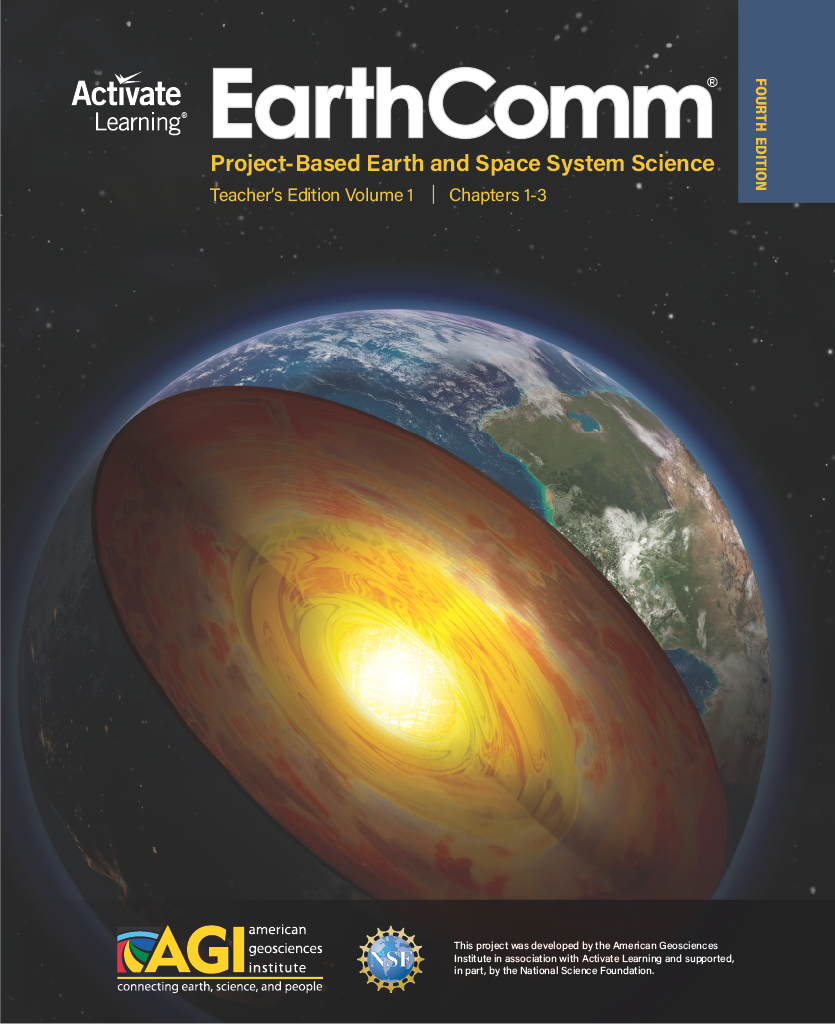EarthComm

Welcome to the support site for educators and students using the EarthComm Textbook for their high school Earth Science courses. This website has been designed for both teachers and students to access online resources that can provide further background, context, and interactives related to the content within the EarthComm textbook. If you are new to EarthComm, please start with the overview of the program.
About This Page
Each EarthComm chapter has a webpage that provides the learning outcomes and online resources, sorted by chapter section and the topics within each section.The webpage for each section is divided into one or more of the following segments: Learning Through Technology, Inquiring Further, Considering Sustainability, and General Resources.
This site provides links to many nonprofit organizations, educational institutions, and federal agencies. You are subject to the privacy policies of those sites when you leave the EarthComm site. References in the EarthComm website to any specific commercial products, process, service, manufacturer, or company does not constitute its endorsement or recommendation by the American Geosciences Institute (AGI). AGI is not responsible for the contents of any “off-site” web page referenced from this server.
How to use this site:
Online Resources
Introduction to the UN Sustainable Development Goals *Fourth Edition
Chapter 1: Plate Tectonics
Chapter 2: Minerals, Rocks, and Structures
Chapter 3: Surface Processes
Chapter 4: Winds, Oceans, Weather and Climate
Chapter 5: Global Climate Change
Chapter 6: Earth’s Natural Resources
Chapter 7: Earth System Evolution
Chapter 8: Astronomy
Map Resources
What is EarthComm
EarthComm provides a comprehensive secondary-level educational program in the Earth Sciences that includes student learning materials, teacher resources (both materials and teacher-support networks), and assessment tools for a hands-on, inquiry-driven, instructional program. The philosophy and design of EarthComm, Project-Based Earth and Space System Science supports the key concepts within the Next Generation Science Standards. This Earth-systems science curriculum adopts the philosophy of three-dimensional learning, which is closely related to its original design. In each section of the Student Edition, the interdependence of the science and engineering practices (SEPs), disciplinary core ideas (DCIs), and crosscutting concepts (CcCs) are clear from the outset and continue through the investigations, readings, and assessments. In the Teacher’s Edition, an NGSS Storyline for each section describes the interplay of each element of three-dimensional learning for educators. It emphasizes important concepts, understandings, and abilities that all students can use to make wise decisions, think critically, and understand and appreciate the Earth system.
Click here for information on how to order EarthComm
The goals of the EarthComm program are:
-
To teach students the principles and practices of Earth science and to demonstrate the relevance of Earth science to their lives and environment.
-
To approach Earth Science through a problem-solving, community-based model in which the teacher plays the role of facilitator.
-
To establish an expanded learning environment that incorporates field work, technological access to data, and traditional classroom and laboratory activities.
-
To support the development of communities of learners by establishing student teams and by building a greater regional and national community.
-
To use local and regional issues and concerns, especially sustainability, to stimulate problem-solving activities and to foster a sense of Earth stewardship by students in their communities.
